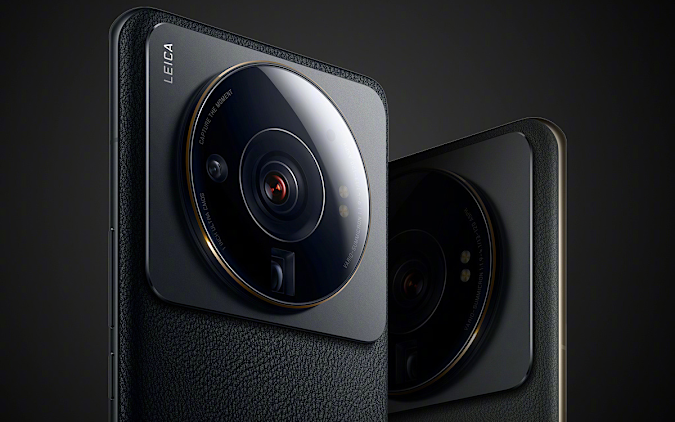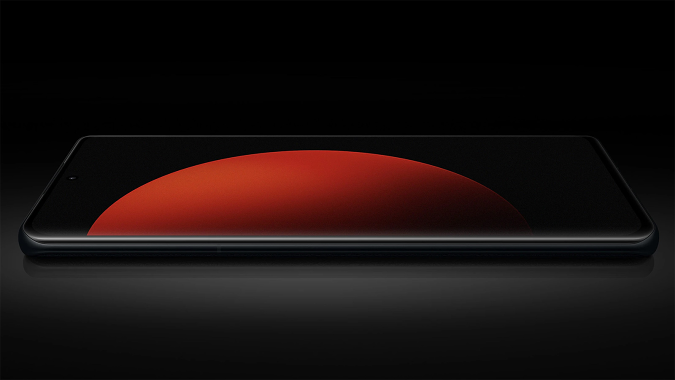Xiaomi 12S Ultra has a Leica camera with a massive 1-inch sensor
Merely six months after its previous flagship launch, today Xiaomi announced a trio of familiar-looking smartphones to mark the beginning of its partnership with Leica. The new 12S Series features MIUI 13 based on Android 12, and it runs on Qualcomm’s allegedly more efficient Snapdragon 8+ Gen 1 flagship processor, with the headlining 12S Ultra packing a massive 1-inch, 50.3-megapixel Sony IMX989 main sensor. This translates to a generous pixel size of 1.6um, which then doubles to 3.2um via pixel binning for a supposedly boosted color accuracy and low light performance. And unlike the Sony Xperia Pro-I, the Xiaomi 12S Ultra apparently uses the entire portion of its 1-inch sensor.
According to CEO Lei Jun, Xiaomi took part in the Sony IMX989’s development, and the $15 million cost was also split evenly between the two companies. Interestingly, the sensor won’t be exclusive to Xiaomi; Lei added that it’ll be made available to his local competitors after the launch of the 12S Ultra, in order to “promote the advancement of mobile imaging together.”

Xiaomi
As for Leica’s part on the Xiaomi 12S Ultra, you get a “Leica Summicron 1:1.9-4.1 / 13-120 ASPH camera system” covering all three rear cameras: the aforementioned 50.3-megapixel main camera (23mm, f/1.9), along with the 48-megapixel ultra-wide camera (13mm, f/2.2) and the 48-megapixel periscopic camera (120mm, f/4.1). Both 48-megapixel cameras use a 1/2-inch Sony IMX586 sensor. The entire circular camera island — now with “Leica” co-branding — benefits from some coating magic to mitigate lens glare and improve image consistency across each lens. Oh, and there’s a 23K gold rim here as well.
In addition to some Leica filters, users will be able to switch between two photographic styles: “Leica Authentic Look” for natural-looking shots with stronger three dimensional depth, and “Leica Vibrant Look” which adds Xiaomi’s input on vibrancy while preserving authenticity (somehow). You can also toggle the watermark banner at the bottom of your photos, which will add Leica’s iconic red logo, photo metadata and location coordinates to the right, along with phone model and timestamp on the left.

Xiaomi
On the other side of the phone, there’s a 32-megapixel selfie camera powered by an unknown RGBW sensor. Most of these cameras are capable of Dolby Vision HDR video recording (up to 4K@60fps) and playback, thus making the 12S Ultra the first Android device to sport these features. Some also utilize the motor-based “HyperOIS” for more stable footage. As for still shots, the entire 12S Series supports 10-bit RAW format calibrated by Adobe Labs, with color correction metadata embedded in the files for easier post-production with the likes of Adobe Lightroom.
The 12S Ultra also happens to carry two proprietary Xiaomi Surge chips: a Surge P1 fast-charging chipset and a Surge G1 battery management chipset. These provide support for 67W wired fast charging, 50W wireless fast charging and 10W reverse charging for the 4,860mAh single cell silicon oxygen anode battery. Note that some fast-charging solutions use a dual cell battery instead to split the current load, which is why it’s a good thing that the Surge P1 can handle an output current of up to 16A here, and apparently with 96.8% conversion efficiency. Like Oppo’s and ASUS’ recent handsets, the 12S Ultra offer adaptive charging as well, which allegedly increases the number of charge cycles by 25 percent.
Keeping the phone cool is also key to a healthier battery, not to mention a more stable performance while gaming. The Xiaomi 12S Ultra is equipped with a “three dimensional cooling pump” which moves cooling liquid across warm surfaces using a capillary mechanism similar to that on leaves. This apparently improves thermal conductivity significantly, compared to conventional vapor cooling modules.

Xiaomi
The rest of the Xiaomi 12S Ultra is standard flagship affair. For the display, you get a 6.73-inch Samsung E5 AMOLED panel (3,200 x 1,440, 522ppi; LTPO 2.0), with a peak brightness of up to 1,500 nits, a 1-120Hz AdaptiveSync Pro refresh rate, native 10-bit color depth and support for P3 color gamut. As you can tell from the camera features, the screen can handle Dolby Vision, as well as HDR10+, HDR10 and HLG; these will go well with the Harman Kardon speakers which also support Dolby Atmos audio. The device is IP68-rated, meaning it should survive accidental dives into sinks and pools. You’ll also find an infrared remote port at the top for controlling home appliances.
Options include up to 12GB of LPDDR5 RAM, up to 512GB of UFS 3.1 storage — featuring Xiaomi’s self-developed FBO (File-Based Optimization) storage refresh tech, which supposedly maintains the same read/write performance for at least four years (and Lei added that FBO has already been written into the next-gen UFS 4.0 storage specification). Buyers can choose between a “Classic Black” and a “Verdant Green,” both wrapped in vegan…
Read More: Xiaomi 12S Ultra has a Leica camera with a massive 1-inch sensor

